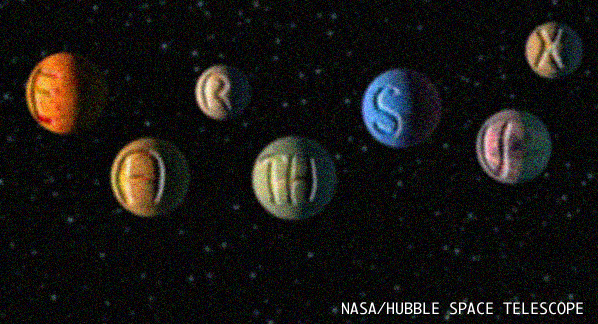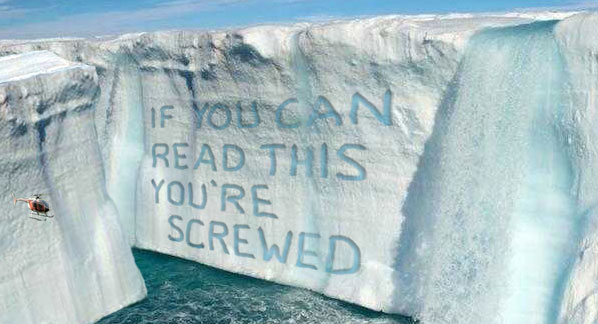Formula Explains Behavior of Internet, Consumers, even Shopping Malls
CAMBRIDGE, ENGLAND. (SatireWire.com) – Why do Americans consume so much? What do glazed doughnuts have to do with the Internet’s rapid growth and sudden upheaval? Why do small people accidentally walk into Big and Tall shops?
According to researchers, all the answers can be found in a one revolutionary, and somewhat insulting, theory: Quantum Consumer Theory. While its name is daunting, the theory itself is rather simple: consumers generate gravitational fields, and large numbers of consumers create even larger gravitational fields. If the consumers are also themselves large – if they have, in scientific terms, “substantial mass” – then they create a commercial gravitational field that will literally be impossible for others to avoid.
This explains why, for instance, the U.S. tends to lead in economic consumption, says Richard Steinman, a researcher at the Royal College of Economic Physics.
 |
“Individual Americans, being among the most overweight of the planet’s inhabitants, generate larger gravitational fields than anyone on Earth,” he says, “and groups of American consumers, huddled together, can draw in even more consumers simply by being in the same place.”
And this, Steinman asserts, solves more than a few mysteries. For instance, it has always been assumed that cars seen circling the lots at shopping malls were looking for a place to park. But Quantum Consumer Theory reveals that this is not the case. Instead, as malls are packed with consumers, they have strong commercial gravitational fields, meaning that cars circling the lot are actually in orbit around the mall, and only when that orbit reaches a critical point of decay will that car park and that consumer go inside. This also explains why people who don’t intend to shop come home with packages – they simply get too close to a commercial gravitation field and are sucked in – and why many people of average size accidentally walk into Big and Tall shops – they are drawn in by the sheer mass of the individuals in the store.
When researchers first came across the theory, they were excited, and several of them pilfered colorful tropical fish from the lab aquarium and swallowed them whole. But the celebration was short-lived.
As econo-physicist Mindy Rodriguez recalls: “It suddenly occurred to us that if Quantum Consumer Theory were correct – if commercial gravitation increases as the mass of consumers increases – then there must exist, by extension, commercial black holes, massive, often violent places with such intense gravitational fields that, once entered, no individual or entity can escape.”
Monitoring the movements of consumers and companies, Rodriguez began looking for erratic behavior, or “wobbles,” that could be explained only by the presence of a commercial black hole. It didn’t take long to find one: the Internet.
(Side note: researchers insist the Internet would not have grown so quickly, or perhaps at all, had it been conceived outside the United States. This is not because of the U.S. lead in technology, venture financing, or even entrepreneurial spirit. Instead, “It’s a question of mass,” says Rodriguez. “You get 20 million or 50 million Americans together, and you’re talking real beef, major gravity. A lot of people tend to credit computer scientists with being responsible for the rise of the Internet, but we give full credit to the glazed doughnut.”)
The Internet gained mass as the first few individuals and companies entered the domain, and its gravitation grew remarkably quickly. But adhering to the laws of Quantum Consumerism, the larger companies with the greatest mass were initially not drawn into the Internet. Hence the tendency of old economy companies, and even giants such as Microsoft and Intel, to be late to the game.
Eventually, however, the Internet’s commercial gravitational field grew so strong as to draw in thousands of companies and millions of people, many of whom exhibited the erratic behavior of objects proximal to black holes: e.g. push technology, Larry Ellison’s “the network is the computer,” and pretty much everything said by Al Gore. Finally, the field’s gravitational mass was so powerful that no corporation could avoid it.
The econo-physicists were about to celebrate this stunning conclusion when somebody recognized a possible glitch, and for a few moments, the tropical fish were spared. The problem, they realized, was that black holes don’t usually weaken, and by all visible measures, it appeared in mid-2000 that the impossible was happening with the Internet. However, led by the Royal College’s Claude Leonais, researchers concluded this hole wasn’t diminishing. It was, rather, exhibiting all the tendencies of a commercial black hole growing stronger. The fish tank was quickly emptied.
“What was happening – what is happening – is that these companies are being drawn past what we call the ‘event horizon,’ that point where an object in a black hole becomes stretched thinner and thinner and is eventually broken up by tidal forces,” Leonais says. “Interestingly, once inside the event horizon, no information can be transmitted outward, which is why these companies are seldom saved by last-minute funding: nobody can hear them scream.”
So, if Quantum Consumer Theory holds true, what’s next?
“If we’re correct,” says Leonais, “everyone and everything will eventually be sucked into the Internet, and at some point, what we will have is one massive black hole consisting of one massive company.
“And if that happens,” Leonais adds, ” I, for one, will dine on angelfish and those cute little black neons.”
Copyright © 2000-2009, SatireWire.




